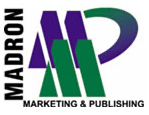It’s been a tough start to 2016.
The U.S. stock market got off to its worst two-week start in history…with a loss of 1,400 points on the Dow Jones Industrial Average through January 15.
And — early this week — a CNBC Fed survey revealed that, “The chances of a recession in the United States are at their highest levels since the fall of 2011.”
So what does that mean for marketers?
With a potential recession looming — and consumers fearing the worst — is now the time to dial back marketing budgets? Should you lower prices for your products in an attempt to salvage sales during difficult times?
The answers to those questions, obviously, depend on the health of your business — and your industry as a whole.
But while there are no easy answers as to how you should adjust your marketing during a tough economy…there are a few simple ideas to consider to help guide you through this rough patch.
These simple ideas apply to marketers of information products…financial newsletters…or nutritional supplements.
Idea #1 — Give Your Prices Some Context
A natural reaction on the part of marketers to a prolonged economic slump is to slash prices. After all, it’s better to keep ringing the cash register than to only see sporadic sales, right?
But hold on a minute before you start chopping your prices in half.
I’m not saying it’s better to make fewer sales…but before you take such a drastic move, consider whether or not you’re doing everything you can to maximize your results at current price levels.
First and foremost — does your marketing put your price structure in the proper context?
When the economy is growing — and a business is enjoying success — it can become easy for some of your marketing fundamentals to slip just a bit.
And one of the most important fundamentals of any great marketing campaign is having a strong “close” to your sales effort.
A big part of that close can be putting your pricing into a flattering context. For example…”For less than the cost of a cup of coffee, you can give your family comprehensive financial security.”
Sounds a lot better than “Buy my newsletter for $29 per month,” doesn’t it?
I’m being simplistic here in the interest of space, but the idea isn’t complicated. Show your reader how the price of your product or service compares favorably to other everyday purchases…or comparable alternatives.
The same goes for health products. How much could your product save your customer in the long run? How inexpensive is your product compared to a prescription solution? How much, really, is good health worth to your customer?
Take a look at your best — and worst — marketing campaigns and put them to the test. How well are you building the case for your current pricing?
Before you begin slashing your prices, make sure you’re showing your prospect just what a great bargain your product or service is…how much they’ll save themselves by using it…and how inexpensive it is when compared to other regular expenditures.
Idea #2 — Become Part of Your Prospect’s Trusted Inner Circle
It’s human nature, when times are tough, to look to those closest to you for guidance and support. Your prospect may be experiencing anxiety about his financial future…and maybe he’s seen friends or relatives lose their jobs in the midst of this crisis.
So you can be sure the last thing your prospect is interested in during this time is an unsolicited sales message from a stranger.
You already know how important it is to build a great relationship with all of your customers and prospects. You should treat each member of your e-mail list with great respect…sending them valuable content in addition to those great marketing messages you’re so proud of.
Those marketers whose messages have the most impact during times like these are those who have done the best job of building that relationship. The e-mails that get opened are the ones coming from someone who has established trust…and that’s something that requires consistent effort.
Now is the time to double-down on your relationship with your prospects. Consider increasing the frequency of free content you send to your e-mail list in order to make sure those potential customers see you as a trusted source of information and advice.
Idea #3 — Emphasize the Value You’re Providing
Along with giving context to your pricing (idea #1) another proven idea for helping improve your sales letter’s “close” is to build up and show the value of your product in a way that eliminates any doubt about its value.
Remember…your prospect is being more careful with money these days, so there will be more price-related objections for you to overcome.
By showing your reader all the components of your product or service’s value, you can help overcome those objections.
For example…nutritional supplement marketers should make absolutely certain they’re emphasizing the quality of the ingredients in their formulation…along with the quality controls in the manufacturing process…and the research and science that are behind the supplement.
When it comes to information products or financial advice, show the reader how much research went into the product…and compare it to how much is spent by larger institutions on similar research. This is mandatory for financial products; for example — “Some of Wall Street’s largest institutions typically pay $10,000 or more for research of this nature. But it’s available to you for just $499.”
The main idea here is to provide assurance to your prospect that the decision he’s considering — whether or not to spend money on your product — is one that’s worthwhile. During periods of economic turmoil, it’s essential that you win the battle at the close and prove to your prospect — beyond any doubt — that he’s about to make a smart decision…regardless of price.
No question about it — marketing success can be harder to achieve when the economy is struggling. But it’s far from impossible.
By focusing on the fundamentals — and making sure you’re doing right by your customer — you’ll continue to enjoy success no matter how long it takes for the economic picture to clear up.
Jody Madron is a results-oriented copywriter with more than 20 years of breakthrough marketing experience. To learn how Jody can deliver results-boosting copy — ahead of your deadline — visit www.MadronMarketing.com.

